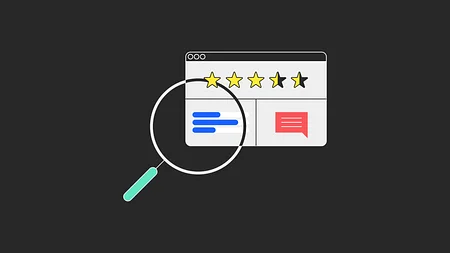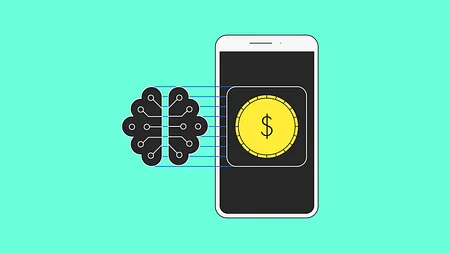Product managers have the tools to fix ESG investing

Delivered straight to your inbox
Get each edition of Unfiltered - our no BS, uncensored analysis of fintech news and hot topics sent to your inbox each fortnight.
Subscribe
Recently, Nick Miller, Senior Ventures Strategist at 11:FS, published an article on why ESG investing is broken. If you haven't already, go and give it a read before you dive into this one.
He outlined a number of problems with the current ESG investing landscape, including: industry-wide mismarketing of ‘social’, ‘green’ or ‘low-carbon’ products to customers, misselling of carbon-offsetting products to customers and greenwashing by companies. As a product manager, I know that product has a huge role to play in addressing the first two offences - mismarketing and misselling of products. Fundamentally, our role is to create a product that delivers value to customers - not one that is misleading. So, as product managers, how do we address these offences to make sure that they are discouraged throughout the industry?
So, step 1: Education
At 11:FS, we live by a few simple principles. Among these, we design new digital propositions grounded in customer Jobs to be Done (JTBD). The idea of JTBD is to understand human motivations and the desired outcomes that people are looking for in life. For example, and in the context of ESG investing, a recurring JTBD that surfaces in every customer interview is: ‘Help me to make better decisions.’ People want to make progress towards investing in greener companies, but don’t know where to start. From experience, we know that this JTBD is tied to upskilling customers on investing so that they increase their confidence and are subsequently able to make better decisions.
A survey conducted by King Financial Planning found that 60% of customers, ranging from their early 20s to early 80s, don’t know what ESG is. While this stat might seem shocking, it explains how companies have been able to get away with pulling the wool over their customers’ eyes. Companies aren’t investing their time and effort into upskilling customers on ESG investing products, so customers are ending up with products that they think are ‘good’, but perhaps don’t fully understand. This does nothing to increase the investing confidence of a customer - instead, it leaves customers trapped in a cycle of dependency on the company to do the right thing.
Companies aren’t investing their time and effort into upskilling customers on ESG investing products...
We know that companies are not doing the right thing and therefore customers are not progressing towards their goal of making better decisions. These customers have taken the first step towards their goal, by deciding to invest in products that have a positive societal or environmental impact, but they’re being let down by companies who are mismarketing and misselling products. How is a customer supposed to make better decisions when they are being sold 'fossil fuel-free' indices that hold refining companies?
A second JTBD that we often hear is: ‘Help me to feel like I am doing my part for and making an impact on climate change.’ Companies typically address this JTBD by offering carbon-offsetting products, which are schemes that allow individuals or companies to invest in environmental projects that will offset their own carbon footprint, alongside their core product. However, not many companies are good at showing the carbon impact of a portfolio of investments, due to a lack of clean and transparent data. So customers are still pretty uninformed about their carbon footprint.
A market-leading ESG investing proposition helps customers make progress with ease and confidence
We have a responsibility to our customers to design a proposition that helps them to make progress towards feeling more confident with ESG investing. Some of the ways we can do this are outlined below:
1. Let’s start with the obvious - explain what your ESG product contains
If companies focus on only one thing, it should be this. Most customers who are new to ESG investing will choose to invest using a pooled investment product, such as an exchange-traded fund (ETF) or a mutual fund. These products allow sufficient diversification at a smaller investment amount. Managers of these ESG-focused ETFs or mutual funds need to commit to negative screening - explicitly avoiding certain types of companies (e.g. fossil fuel) - so that customers are clearly able to screen products based on which ones align with their values. Customers don’t want to be taken for fools. If they feel like you’re trying to deceive them, they’ll stop being a customer of your company. While there is no single definition or universally agreed-upon framework to classify every ESG product, you have the power to take responsibility and classify your products accurately and fairly.
If they feel like you’re trying to deceive them, they’ll stop being a customer of your company.
2. Educate customers at key points in the investment journey by providing educational content, market research or helpful tips
Our 11:FS Pulse Fintech for Good playlist gives examples of companies that are designing great experiences aimed at tackling societal and environmental challenges. A standout example is Klarna, which has an insightful section dedicated to its CO2 emissions on its app. While Klarna is not (yet) in the business of investing, investing companies should take note of the way in which information is clearly presented, links to further resources where necessary and provides summary insights on the product. This gives clarity on what an investing product actually contains, and helps customers to make better more informed decisions.
3. Provide personalised product recommendations that are relevant to the customer’s situation
An ESG investing proposition should make ESG investing as simple and seamless for the customer as possible. Why not include a brief questionnaire during onboarding that helps customers to identify which of the Sustainable Development Goals (SDGs) means the most to them? This information can then be used to suggest a product that aligns with their preferences. For example, if a customer indicates that 'clean water and sanitation' is most important to them, then you can suggest an ETF that invests in companies that are advancing the provision of clear water. This guidance will help customers, especially those who are new to ESG investing, to choose a cause that is most closely aligned with their moral or environmental values. Wealth managers and robo-advisors could even consider integrating this questionnaire into their customer suitability tests to start creating a new standard for risk profiling that includes ESG questions.
4. Use smart data to measure impact and inform reporting
There are a number of tools that you can integrate with to provide accurate and valuable insights to your customers. Sanctify uses an AI engine to analyse ESG sentiment and trends from over 55,000 news sources to give insights into a company’s ESG performance. This type of data can be used by fund managers and investors alike to make better decisions when it comes to their ESG investing strategy. Matter is ‘an analytics platform that connects investors to insights from experts and offers a flexible alternative to ESG ratings.’ Matter’s Impact Reporting tool helps companies to demonstrate the impact of investments directly to clients, addressing the customer JTBD: ‘Help me to feel like I am doing my part for and making an impact on climate change.’ These insights do a great job of helping customers to understand their impact, which in turn will help them to make better decisions.
My unfiltered opinion
ESG investing is broken and it’s time for product managers to step up and put things right. After all, we’re responsible for how our products are viewed by consumers. With ESG goals more important than ever for the modern customer, there’s no excuse for mismarketing and misselling products - we need to stand by our word. Otherwise, don’t expect your customers to hang around.



